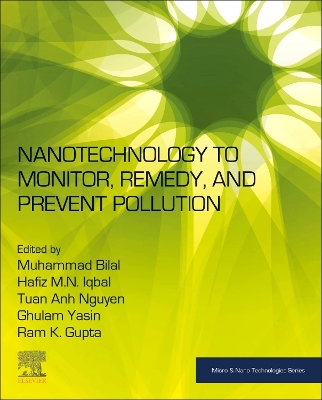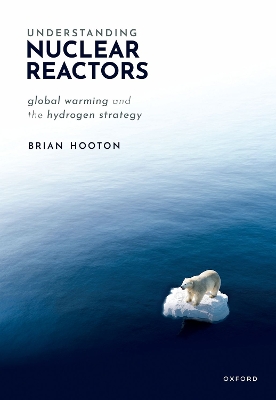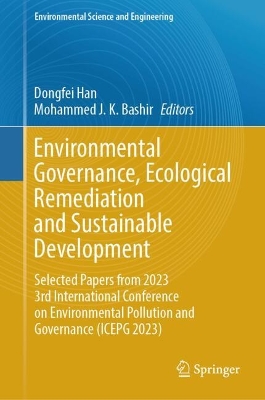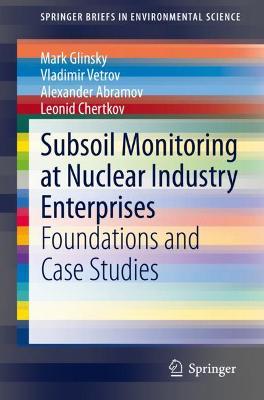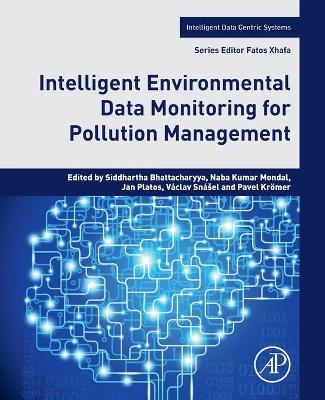Understanding Nuclear Reactors
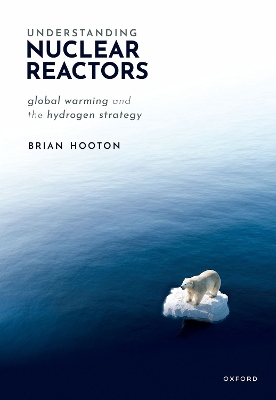 -10%
portes grátis
-10%
portes grátis
Understanding Nuclear Reactors
Global Warming and the Hydrogen Strategy
Hooton, Dr Brian
Oxford University Press
05/2024
176
Dura
Inglês
9780198902652
15 a 20 dias
1.1: Global Warming
1.2: Capacity Factors
1.3: Welcome to the Nuclear Age
1.4: The First Electricity Producing Reactors
1.5: The Prelude
2. Fundamental Nuclear Physics
2.1: The Pauli Exclusion Principle
2.2: Nuclear Forces
2.3: Nuclear Reactions
2.4: Energy and Mass Units
2.5: Photons
2.6: Antimatter, Pair Production, and Annihilation
2.7: Mass Defects, Q Values, and Cross-Sections
2.8: Cross-Sections
2.9: The Discovery of Radioactivity
2.10: The General Characteristics of Radioactivity
2.11: Gamma Decay
2.12: Spontaneous Fission
3. Basic Quantum Theory
3.1: Skip this Chapter if you Wish
3.2: The Uncertainty Principle
3.3: The Theoretical Treatment of Nuclear Physics
3.4: Atomic Spectra and Quantum Numbers
3.5: Sommerfeld's Contribution
3.6: Pauli's Contribution
3.7: Spin and Parity
3.8: Alpha Decay
3.9: Beta Decay and the Story of the Neutrino
3.10: The Discovery of the Neutron
3.11: Quantum Theory and Beyond
4. The Story of E = MC2 and Relativity
4.1: The Unification of Electricity and Magnetism
4.2: Relative Motion
4.3: Einstein's Theory
4.4: Standards of Mass, Length, and Time
5. The Fission Process and the Characteristics of Fission
5.1: The Discovery of Fission
5.2: Niels Bohr and Copenhagen
5.3: The Fission Process
5.4: Neutron Interactions
5.5: The Fate of Gamma Rays
5.6: Fission Fragments
5.7: Delayed Neutrons
5.8: The Energy of Fission
5.9: Decay Heat
5.10: The Chain Reaction
6. Nuclear Reactors in General
6.1: Nuclear Reactor Calculations
6.2: The Growth of the Neutron Population
6.3: The Six Factor Formula
6.4: The Effect of Delayed Neutrons on Reactor Control
6.5: Reactivity
6.6: Monte Carlo Models
6.7: Nuclear Reactor Operations
6.8: Fuel
6.9: Moderators
6.10: Coolants
6.11: Poisons
6.12: Control Poisons
6.13: Unavoidable Poisons
6.14: Burnable Poisons
6.15: Engineering Materials
6.16: The Fast Reactor
6.17: Hybrid Reactors
7. Reactor Operations and Control
7.1: Controlling Reactors to Keep them Safe
7.2: The First Reactors
7.3: Reactor CP1
7.4: Controlling Commercial Reactors
7.5: The Reactor Pressure Vessel
7.6: The Reactor Coolant Pump
7.7: The Pressuriser
7.8: The Steam Generator
7.9: The Boron Loading Loop
7.10: Power Measurement
7.11: The Fuel Temperature Coefficient (FTC)
7.12: The Moderator Temperature Coefficient (MTC)
7.13: The Void Coefficient
7.14: Changes In Steam Demand
7.15: Control Room Operations
8. Safety
8.1: Safety, Risk, and Consequences
8.2: The Regulators
8.3: Decay Heat Removal
8.4: Loss of Coolant
8.5: Passive Safety Measures
8.6: The Windscale Fire
8.7: Brown's Ferry
8.8: Three Mile Island
8.9: Chernobyl 1986
8.10: Problems in the Fukushima Region of Japan
8.11: Safety Overview
8.12: Understanding the Health Hazard of Radiation
9. The Nuclear Fuel Cycle
9.1: The Nuclear Fuel Cycle Definition
9.2: Mining
9.3: Enrichment
9.4: Fuel Fabrication
9.5: Spent Fuel Management
9.6: Spent Fuel Ponds
9.7: Cherenkov Radiation
9.8: Reprocessing
9.9: Nuclear Waste
10. International Treaties and Obligations
10.1: Euratom
10.2: Treaty on the Non-Proliferation of Nuclear Weapons, NPT
10.3: The International Atomic Energy Agency, IAEA
10.4: Nuclear Safeguards
10.5: Obligations
11. The Future of Fission Reactors and Fusion
11.1: The Alternatives to Fossil Fuel
11.2: Generation IV Technology
11.3: The Move to Higher Temperatures
11.4: The Move to Fast Reactors
11.5: The Move to SMRs and AMRs
11.6: Plutonium Breeding
11.7: Thorium Breeding
11.8: New Coolants
11.9: Molten Salts
11.10: New Types of Fuel
11.11: Burning Waste and Using the Minor Actinides as Fuel
11.12: New Reprocessing Technology
11.13: The Economics and Politics of Electricity Generation
11.14: The Utilisation of E = MC2
12. Nuclear Fusion
12.1: The Fusion Process
12.2: Producing Fusion in the Laboratory
12.3: ITER
12.4: MAST and STEP
12.5: The Fuel for Fusion
12.6: The Tritium Breeding Ratio, TBR
12.7: Venture Capital
12.8: The Conclusion on Fusion
13. The Hydrogen Strategy
13.1: The Basic Properties of Hydrogen
13.2: The Production of Hydrogen
13.3: Carbon Capture
13.4: Energy Storage
13.5: New Markets for Hydrogen
13.6: Hydrogen in the Colours of the Rainbow
13.7: The Race to Deliver Net Zero
Free
1.1: Global Warming
1.2: Capacity Factors
1.3: Welcome to the Nuclear Age
1.4: The First Electricity Producing Reactors
1.5: The Prelude
2. Fundamental Nuclear Physics
2.1: The Pauli Exclusion Principle
2.2: Nuclear Forces
2.3: Nuclear Reactions
2.4: Energy and Mass Units
2.5: Photons
2.6: Antimatter, Pair Production, and Annihilation
2.7: Mass Defects, Q Values, and Cross-Sections
2.8: Cross-Sections
2.9: The Discovery of Radioactivity
2.10: The General Characteristics of Radioactivity
2.11: Gamma Decay
2.12: Spontaneous Fission
3. Basic Quantum Theory
3.1: Skip this Chapter if you Wish
3.2: The Uncertainty Principle
3.3: The Theoretical Treatment of Nuclear Physics
3.4: Atomic Spectra and Quantum Numbers
3.5: Sommerfeld's Contribution
3.6: Pauli's Contribution
3.7: Spin and Parity
3.8: Alpha Decay
3.9: Beta Decay and the Story of the Neutrino
3.10: The Discovery of the Neutron
3.11: Quantum Theory and Beyond
4. The Story of E = MC2 and Relativity
4.1: The Unification of Electricity and Magnetism
4.2: Relative Motion
4.3: Einstein's Theory
4.4: Standards of Mass, Length, and Time
5. The Fission Process and the Characteristics of Fission
5.1: The Discovery of Fission
5.2: Niels Bohr and Copenhagen
5.3: The Fission Process
5.4: Neutron Interactions
5.5: The Fate of Gamma Rays
5.6: Fission Fragments
5.7: Delayed Neutrons
5.8: The Energy of Fission
5.9: Decay Heat
5.10: The Chain Reaction
6. Nuclear Reactors in General
6.1: Nuclear Reactor Calculations
6.2: The Growth of the Neutron Population
6.3: The Six Factor Formula
6.4: The Effect of Delayed Neutrons on Reactor Control
6.5: Reactivity
6.6: Monte Carlo Models
6.7: Nuclear Reactor Operations
6.8: Fuel
6.9: Moderators
6.10: Coolants
6.11: Poisons
6.12: Control Poisons
6.13: Unavoidable Poisons
6.14: Burnable Poisons
6.15: Engineering Materials
6.16: The Fast Reactor
6.17: Hybrid Reactors
7. Reactor Operations and Control
7.1: Controlling Reactors to Keep them Safe
7.2: The First Reactors
7.3: Reactor CP1
7.4: Controlling Commercial Reactors
7.5: The Reactor Pressure Vessel
7.6: The Reactor Coolant Pump
7.7: The Pressuriser
7.8: The Steam Generator
7.9: The Boron Loading Loop
7.10: Power Measurement
7.11: The Fuel Temperature Coefficient (FTC)
7.12: The Moderator Temperature Coefficient (MTC)
7.13: The Void Coefficient
7.14: Changes In Steam Demand
7.15: Control Room Operations
8. Safety
8.1: Safety, Risk, and Consequences
8.2: The Regulators
8.3: Decay Heat Removal
8.4: Loss of Coolant
8.5: Passive Safety Measures
8.6: The Windscale Fire
8.7: Brown's Ferry
8.8: Three Mile Island
8.9: Chernobyl 1986
8.10: Problems in the Fukushima Region of Japan
8.11: Safety Overview
8.12: Understanding the Health Hazard of Radiation
9. The Nuclear Fuel Cycle
9.1: The Nuclear Fuel Cycle Definition
9.2: Mining
9.3: Enrichment
9.4: Fuel Fabrication
9.5: Spent Fuel Management
9.6: Spent Fuel Ponds
9.7: Cherenkov Radiation
9.8: Reprocessing
9.9: Nuclear Waste
10. International Treaties and Obligations
10.1: Euratom
10.2: Treaty on the Non-Proliferation of Nuclear Weapons, NPT
10.3: The International Atomic Energy Agency, IAEA
10.4: Nuclear Safeguards
10.5: Obligations
11. The Future of Fission Reactors and Fusion
11.1: The Alternatives to Fossil Fuel
11.2: Generation IV Technology
11.3: The Move to Higher Temperatures
11.4: The Move to Fast Reactors
11.5: The Move to SMRs and AMRs
11.6: Plutonium Breeding
11.7: Thorium Breeding
11.8: New Coolants
11.9: Molten Salts
11.10: New Types of Fuel
11.11: Burning Waste and Using the Minor Actinides as Fuel
11.12: New Reprocessing Technology
11.13: The Economics and Politics of Electricity Generation
11.14: The Utilisation of E = MC2
12. Nuclear Fusion
12.1: The Fusion Process
12.2: Producing Fusion in the Laboratory
12.3: ITER
12.4: MAST and STEP
12.5: The Fuel for Fusion
12.6: The Tritium Breeding Ratio, TBR
12.7: Venture Capital
12.8: The Conclusion on Fusion
13. The Hydrogen Strategy
13.1: The Basic Properties of Hydrogen
13.2: The Production of Hydrogen
13.3: Carbon Capture
13.4: Energy Storage
13.5: New Markets for Hydrogen
13.6: Hydrogen in the Colours of the Rainbow
13.7: The Race to Deliver Net Zero
Free

